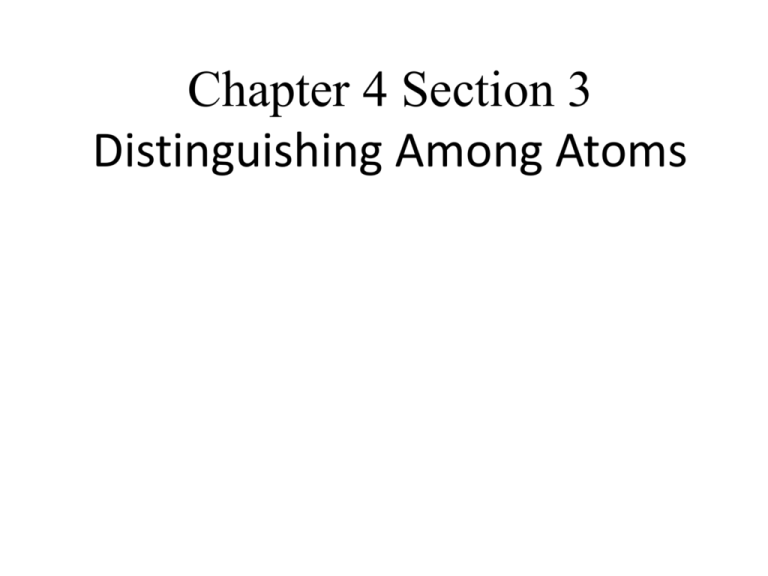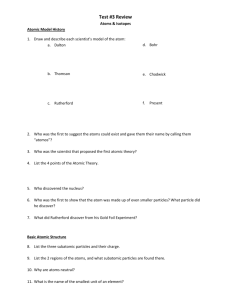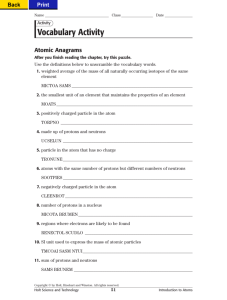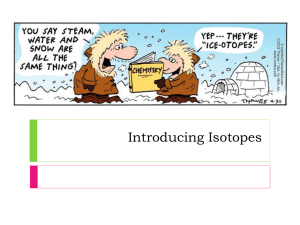Chapter 4 Section 3 Distinguishing Among Atoms
advertisement

Chapter 4 Section 3 Distinguishing Among Atoms 4.3 • Just as apples come in different varieties, a chemical element can come in different “varieties” called isotopes. 4.3 • Atomic Number – What makes one element different from another? 4.3 • Elements are different because they contain different numbers of protons. • The atomic number of an element is the number of protons in the nucleus of an atom of that element. 4.3 Atomic Number 4.3 • Mass Number – How do you find the number of neutrons in an atom? 4.3 – mass number • The total number of protons and neutrons in an atom • The number of neutrons in an atom is the difference between the mass number and atomic number. 4.3 • Au is the chemical symbol for gold. 4.3 • Isotopes – How do isotopes of an element differ? 4.3 • Isotopes –atoms that have the same number of protons but different numbers of neutrons. –different numbers of neutrons = different mass numbers. 4.3 • isotopes are chemically alike – because they have identical numbers of protons and electrons. 4.3 • Atomic Mass – How do you calculate the atomic mass of an element? 4.3 • It is useful to compare the relative masses of atoms to a standard reference isotope. • Carbon-12 is the standard reference isotope. • Cabon-12 has a mass of exactly 12 atomic mass units. • atomic mass unit – Amu – defined as one twelfth of the mass of a carbon-12 atom. 4.3 • Some Elements and Their Isotopes 4.3 • atomic mass – A weighted average mass of the atoms in a naturally occurring sample of the element. • A weighted average mass reflects both the mass and the relative abundance of the isotopes as they occur in nature. 4.3 • Weighted Average Mass of a Chlorine Atom • Remember, it is asking which is more abundant. • You do not have to tell by how much for Conceptual Problem 4.3 4.3 • To calculate the atomic mass of an element – multiply the mass of each isotope by its natural abundance expressed as a decimal, and then add the products. 4.3 • For example, carbon has two stable isotopes: – Carbon-12, which has a natural abundance of 98.89%, and – Carbon-13, which has a natural abundance of 1.11%. 4.3 • The Periodic Table—A Preview – Why is a periodic table useful? 4.3 – periodic table • an arrangement of elements in which the elements are separated into groups based on a set of repeating properties. • allows you to easily compare the properties of one element (or a group of elements) to another element (or group of elements). 4.3 4.3 • Period – each horizontal row of the periodic table – Within a given period, the properties of the elements vary as you move across it from element to element. 4.3 • A Period 4.3 • Group (or family) – each vertical column of the periodic table – Elements within a group have similar chemical and physical properties. 4.3 • A Group or Family END









